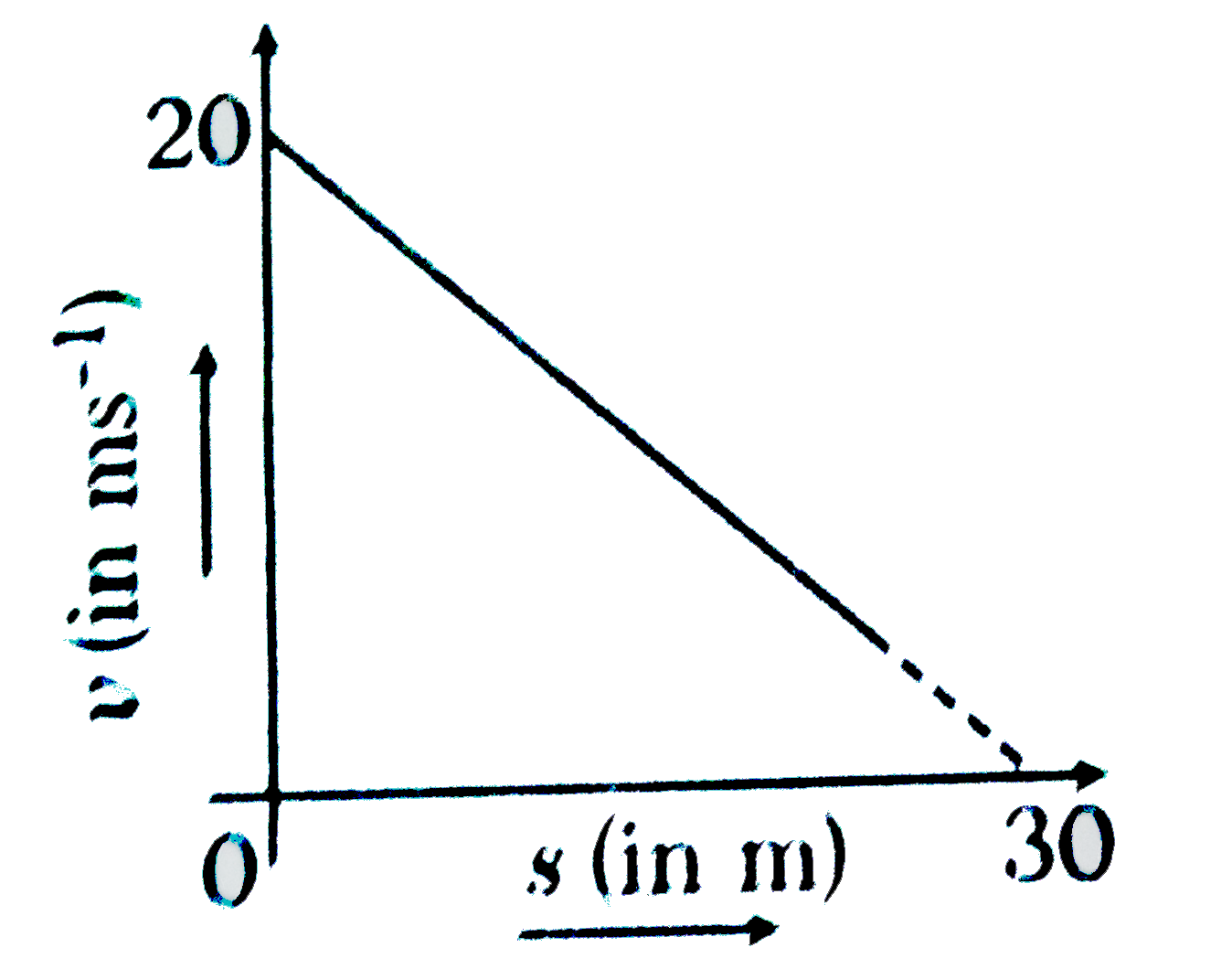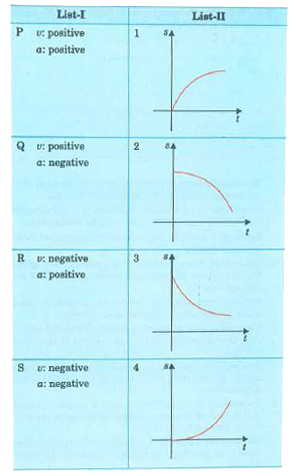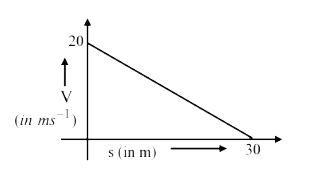If the velocity v of a particle moving along a straight line decreases linearly with its displacement from 20m/s to a value approaching zero at s=30m, determine the acceleration of the particle when s=15m.
The correct Answer is:B, C
To solve the problem, we need to determine the acceleration of the particle when its displacement s=15m. We know that the velocity v decreases linearly from 20m/s at s=0m to 0m/s at s=30m.
1. Establish the relationship between velocity and displacement:
Since the velocity decreases linearly from 20m/s to 0m/s as displacement increases from 0m to 30m, we can express this relationship as:
v=20−2030s
Simplifying this gives:
v=20−23s
2. Find the velocity at s=15m:
Substitute s=15m into the velocity equation:
v=20−23⋅15
v=20−10=10m/s
3. Use the kinematic relation to find acceleration:
We know that acceleration a can be expressed as:
a=dvdt
We can also use the chain rule to express acceleration in terms of displacement:
a=dvds⋅dsdt=dvds⋅v
4. Calculate dvds:
Differentiate the velocity equation with respect to s:
dvds=−23
5. Substitute v and dvds into the acceleration equation:
Now, substituting v=10m/s and dvds=−23:
a=(−23)⋅10
a=−203m/s2
6. Final Result:
The acceleration of the particle when s=15m is:
a=−203m/s2≈−6.67m/s2
Since the velocity decreases linearly from 20m/s to 0m/s as displacement increases from 0m to 30m, we can express this relationship as:
v=20−2030s
Simplifying this gives:
v=20−23s
Substitute s=15m into the velocity equation:
v=20−23⋅15
v=20−10=10m/s
We know that acceleration a can be expressed as:
a=dvdt
We can also use the chain rule to express acceleration in terms of displacement:
a=dvds⋅dsdt=dvds⋅v
Differentiate the velocity equation with respect to s:
dvds=−23
Now, substituting v=10m/s and dvds=−23:
a=(−23)⋅10
a=−203m/s2
The acceleration of the particle when s=15m is:
a=−203m/s2≈−6.67m/s2
Topper's Solved these Questions
- KINEMATICSBOOK - DC PANDEYCHAPTER - KINEMATICSEXERCISE - More Than One Correct
6 Videos
- KINEMATICSBOOK - DC PANDEYCHAPTER - KINEMATICSEXERCISE - Comprehension
7 Videos
- KINEMATICSBOOK - DC PANDEYCHAPTER - KINEMATICSEXERCISE - Objective
45 Videos
- GRAVITATIONBOOK - DC PANDEYCHAPTER - GRAVITATIONEXERCISE - (C) Chapter Exercises
45 Videos
- KINEMATICS 1BOOK - DC PANDEYCHAPTER - KINEMATICS 1EXERCISE - INTEGER_TYPE
15 Videos
Similar Questions
The velocity of a particle moving in a straight line is decreasing at the rate of 3m/s per metre of displacement at an instant when the velocity is 10m/s. Determine the acceleration of the particle at this instant.
View SolutionVelocity of a particle moving in a straight line varies with its displacement as v=(√4+4s)m/s. Displacement of particle at time t=0 is s=0. Find displacement of particle at time t=2s.
View Solution
Knowledge Check
If the velocity v of particle moving along a straight line decreases linearly with its displacement s from 20ms−1 to a value approaching zero at s = 30 m, then acceleration of the particle at v=10ms^(-1) is
 A23ms−2B−23ms−2C203ms−2D−203ms−2
A23ms−2B−23ms−2C203ms−2D−203ms−2If the velocity v of a particle moving along a straight line decreases linearly with its position coordinates s from 50m/s to a value approaching zero at = 100 m, the time it takes to reach the 100 m position will be:
 A10 sB5 sCInfinityD0.5 s
A10 sB5 sCInfinityD0.5 sIf the velocity v of a particle moving along a straight line and its distance s from a fixed point on the line are related by v2=a2+s2, then its acceleration equals
AasBsCs2D2s
A particle is moving in a straight line and its velocity varies with its displacement as v=√4+4s m/s. Assume s=0 at t=0. find the displacement of the particle in metres at t=1s.
View SolutionA particle moves along a straight line such that its displacement s at any time t is given by s=t3−6t2+3t+4m, t being is seconds. Find the velocity of the particle when the acceleration is zero.
View SolutionIn a linear S.H.M., the acceleration of the particle is zero, when its velocity is
View SolutionFor a particle moving in a straight line assume s,v,a and t represents displacement, velocity, acceleration and time respectively.

View SolutionThe velocity –position graph of a particle moving along a straight line is shown. Then acceleration of the particle at s = 15 m is :

View Solution